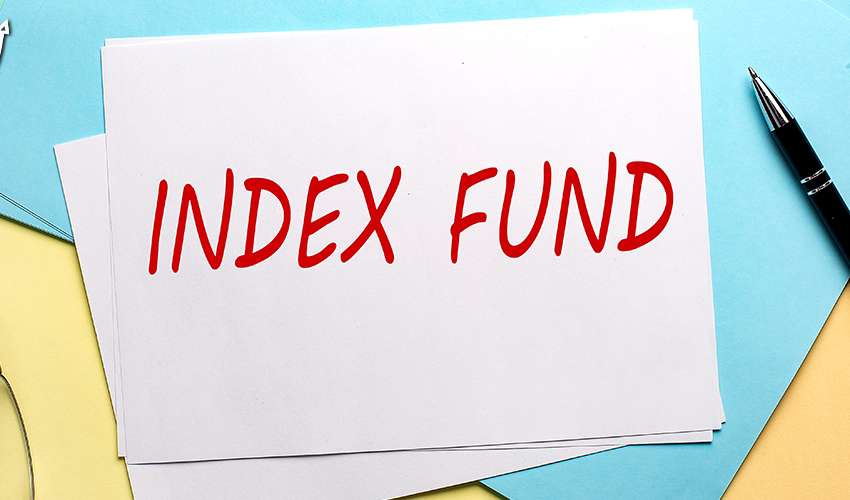The financial services sector, especially bank stocks had a tumultuous 2023. The year witnessed three large bank failures followed by repeated interest rate hikes that added to bank interest rates but also resulted in limited borrowing for customers.
Despite these difficulties, top bank stocks are currently outperforming the US Market Index in 2024. According to experts, the U.S. banking system has significantly improved over the last decade and capital levels are at an all-time high. In this scenario, investing in bank stocks can be an incredible opportunity.
In this blog, we will discuss the best bank stocks to buy. Let’s dive in.
Best Bank Stocks to Buy in 2024
Here is a list of the best-performing bank stocks according to yearly performance.
| Ticker | Company | Performance |
| JPM | JP Morgan Chase & Co. | 30.07% |
| WFC | Wells Fargo & Co. | 18.18% |
| C | Citigroup Inc. | 7.70% |
| BAC | Bank of America Corp. | 0.82% |
| TD | The Toronto Dominion Bank | 1.9% |
| RY | Royal Bank of Canada | 0.28% |
| USB | U.S. Bancorp | -0.37% |
| PNC | PNC Financial Services Group Inc. | -4.68% |
| FITB | Fifth Third Bancorp | -5.26% |
| MTB | M & T Bank Corp | -10.90% |
JP Morgan Chase
JP Morgan Chase is one of the world’s largest investment banks. It was founded in the 18th century and was formed by the merger of Chase Manhattan Corp and JP Morgan & Co. in December 2000.
It offers a wide range of financial services like asset management, investment banking, and even retail banking services like credit cards. While the JP Morgan side of the company manages the investment banking services, the Chase Brand manages retail banking services like credit cards in the USA & Canada.
Wells Fargo & Co.
It is renowned as America’s one of the Big Four banks and is a top investment bank that offers its services worldwide. Besides investment banking, this financial institution also offers retail banking and commercial banking services to its customers.
While Morgan Stanley, another prominent investment bank, has a higher market capitalization, Wells Fargo is ahead in consolidated assets.
Citigroup Inc.
Citigroup is also one of America’s Big Four banks and the holding company for a number of subsidiaries, including Citibank and Citicorp. It is a market leader in technology platforms, treasury services, and the global wealth management industry.
Although its market cap is not higher than banks like Morgan Stanley or Goldman Sachs, it holds significantly more consolidated assets than them.
Bank of America
Bank of America is the second largest bank in the United States by market cap, after JP Morgan Chase. It is headquartered in Charlotte, North Carolina and offers a plethora of services ranging from investment banking to wealth management.
It primarily works with small to large-sized enterprises and provides insights, advisory, and research tools to make better financial decisions.
Toronto Dominion Bank
Toronto Dominion Bank is a Canadian multinational bank headquartered in Toronto, Canada. It was formed on February 1, 1955, through a merger of the Bank of Toronto and The Dominion Bank. It is one of the Big Five Banks of Canada and was one of the largest banks in Canada by market cap in 2021.
The bank and its subsidiaries have over 89,000 employees and over 26 million clients worldwide. In the United States, the bank operates through its subsidiary TD Bank, NA, which was formed through the merger of TD Banknorth and Commerce Bank.
Royal Bank of Canada
The Royal Bank of Canada is a multinational financial institution and the largest bank in Canada by market cap. It serves over 20 million clients and has more than 100,000 employees globally.
RBC Banque Royale is a US banking subsidiary that formerly operated 439 branches across six states in the United States. However, as of now it only offers cross-border banking services to Canadian tourists and expats.
U.S. Bancorp
U.S. Bancorp is one of the oldest banks in the United States, founded in the late 18th century. It is the parent company of the US Bank and offers a wide range of financial services from lending, and cash management to trust and management services.
It is the second oldest investment bank in the USA and also offers merchant and ATM processing, mortgage banking, insurance services, and credit card services.
PNC Financial Services Group Inc.
PNC Financial Services is among the largest investment banks in the USA and ranked no. 2 in the superregional banks industry. It offers a plethora of financial services including asset management, traditional, corporate, and institutional banking services.
While the shares of PNC plummeted in 2023 amidst the U.S. regional banking crisis, the bank’s valuable branch network and small average account size make it one of the best bank stocks in the USA to buy. PNC also has a 76% loan-to-deposit ratio, which is much better than the U.S. regional banking industry average of 84%.
Fifth Third Bancorp
Fifth Third Bancorp is a U.S. regional bank that primarily offers retail and commercial banking services in the Midwest and Southwest regions of the country. The bank is less susceptible to deposit pressures than other regional banks in the United States and its small average account size will help the bank’s non-interest-bearing deposit performance.
M & T Bank Corp.
M&T Bank is a regional bank in the United States, offering banking, investment, and trust services primarily in the Northeast and mid-Atlantic regions. Amidst the regional banking crisis, M&T has been highly resilient against unrealized losses that many of the regional banks have been forced to navigate in the past year.
Read Also:- Top Middle Market Investment Banks in 2023
What are Bank Stocks?
Bank stocks are shares of financial institutions like Bank of America, JP Morgan, etc. These types of stocks are categorized according to the size of the bank, market cap, and core business.
These leading banks offer financial services like deposits, investment services, and loans to their customers. The overall health of the economy and stock market influences the performance of the best-performing banking stocks in the USA.
Types of Bank Stocks
There are several types of bank stocks according to the size of the business. Let’s take a look
National Banks: These banks manage more than $100 billion in assets and operate all across the United States.
Regional Banks: These types of banks generally operate in specific states and other geographic areas. Regional banks typically manage between $10 billion to $100 billion in assets.
Community Banks: These are small banks that manage less than $10 billion in assets and operate in a specific state or city.
Investment Banks: These banks specifically cater to businesses, governments, and large enterprises. Their services are different than conventional banks, including wealth management, mergers & acquisitions, and IPOs. Their performance is closely tied to the stock market.
Commercial Banks: These banks cater to small companies and provide services like loans and business accounts. Their performance is related to the Federal Government’s interest rates and the overall strength of the economy.
Retail Banks: These are the types of banks that individuals are familiar with. They provide services like checking and savings accounts, credit cards, loans, etc. Their performance also depends on interest rates and the overall health of the economy.

Pros and Cons of Investing in Banks
While bank stocks have been outperforming the U.S. market index, they do come with their fair share of risks. It’s important to understand both the upside and downside before investing in bank stocks.
Advantages of Bank Stocks
- Commercial and Retail banks benefit from higher interest rates as non-investment banks generate most of their income through lending. High interest= Higher lending income.
- Most bank stocks pay dividends. Dividends are an important sign of good financial health.
Disadvantages of Bank Stocks
- If you only invest in companies that align with your values, bank stocks may not be the right option for you. Many banks, especially large financial institutions have gun companies and fossil fuel companies as their clients. Moreover, some of the larger banks also have ongoing cases of money laundering and sanctions evasion.
- Big investment banks are largely dependent on the economy, meaning they suffer in bear markets. Since they mostly serve publicly traded companies, they don’t do well when the market is down. Companies tend to stop spending when the market is down, which means less revenue for investment banks.
- After the 2008 financial crisis, Congress passes the Dodd-Frank Wall Street Reform and Consumer Protection Act. This gives the Federal Reserve the right to restrict bank stock dividend increases and share buybacks during a financial crisis.
How to Invest in Bank Stocks?
You can invest in bank stocks either by buying individual stocks or bank ETFs. An ETF is a basket of stocks grouped together in a single investment vehicle.
Bank Stocks
Stocks are one of the simplest and best-performing investment vehicles but they tend to be a little risky. If you allocate a significant portion of your portfolio to individual bank stock, and it plummets, you could end up with a substantial loss. Moreover, buying several individual stocks can also have a large upfront cost.
According to experts, it is best to research the stocks carefully and allocate not more than 10% of your portfolio to bank stocks.
Bank ETFs
Buying bank ETFs allows investors to buy dozens of bank stocks in a single investment vehicle. One of the best benefits of ETFs is that they offer diversification and are often much cheaper than buying individual stocks.
There are many options available when it comes to bank ETFs. If you want to invest in regional banks, consider ETFs consisting of community and retail banks. On the other hand, if you want to invest in large national banks, look for ETFs consisting largely of big Wall Street banks.
Final Words
Investing in bank stocks has its own pros and cons. However, with high-interest rates and the stock market in a favourable position, it could be beneficial to invest in bank stocks in 2024. We have listed the best-performing bank stocks in this article.
Before investing, it is important to conduct thorough research and understand the risks of investing in bank stocks or ETFs. Lastly, depending on your risk tolerance, you could either go for individual stocks or ETFs.

Frequently Asked Questions(FAQs)
Ans. At the time of writing, JP Morgan Chase is the largest bank by market capitalization in the USA and by far one of the most profitable of the big US banks.
Ans. There are pros and cons of investing in bank stocks. However, with high interest rates and the splendid performance of bank stocks, it could be highly profitable to invest in bank stocks or ETFs in 2024.
Ans. The best and most profitable regional bank stocks are U.S. Bancorp, PNC Financial Services Group, and CapitalOne.






